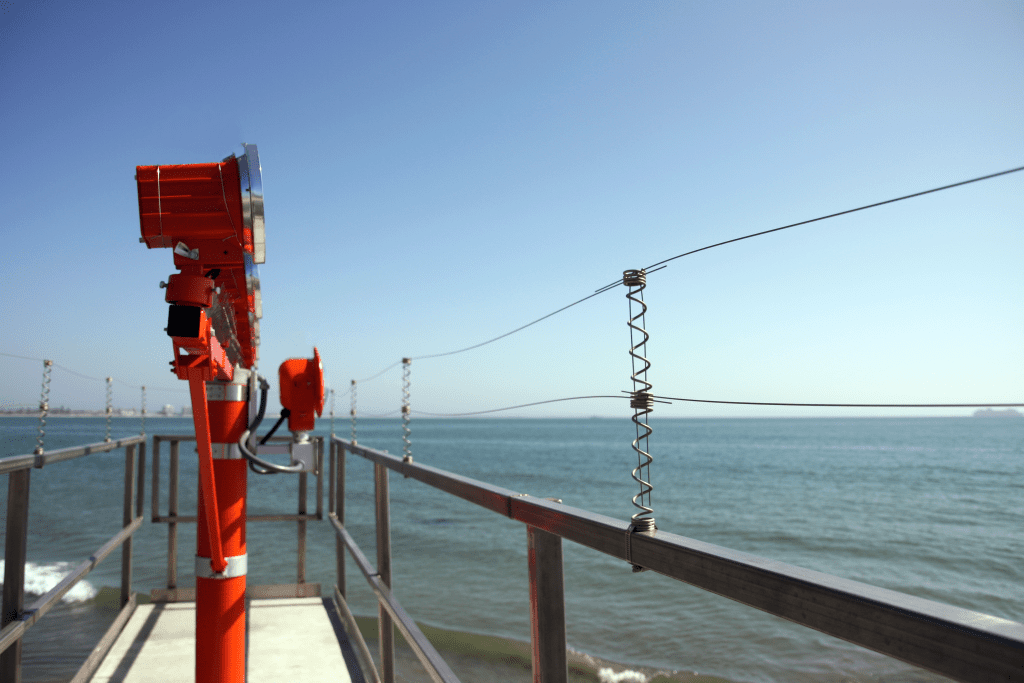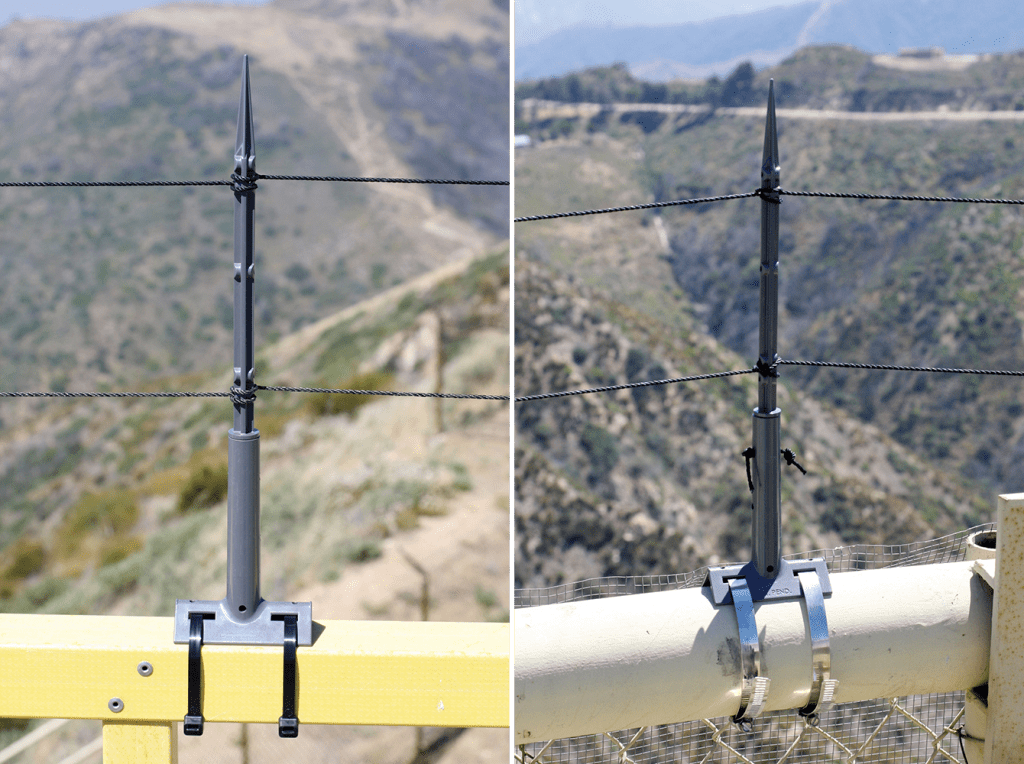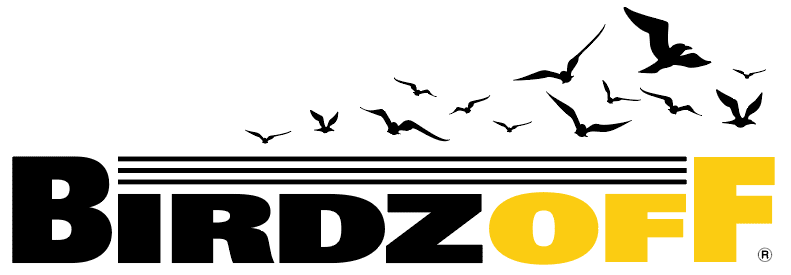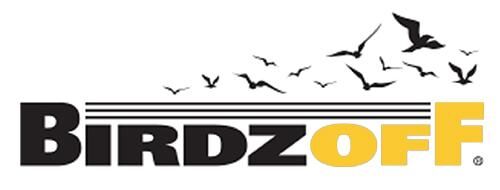
We’ve all heard the phrase “one person’s trash is another person’s treasure”. In this case, we can say that one person’s bird deterrent is another bird’s construction material for a nest. Birds are resourceful when it comes to building nests. Over the years, birds have adapted to use materials created and discarded by humans to construct functional nests. During an inactive Bald Eagle nest removal, socks were found amongst other nesting materials in Dutch Harbor, Alaska. Imagine walking outside to collect your clothes from line drying, and you’re missing a sock. You can’t even blame the dryer gremlins for stealing your socks!
Magpies, birds in the corvid family, have recently been removing bird spikes and weaving them into their nest design. Choosing a bird deterrent might seem simple, especially with the traditional bird spikes being the go to solution for the average consumer. A trained bird control expert knows that selecting the appropriate bird deterrent requires knowledge about the affected structure, bird species, and attachment options. The Magpies’ clever use of deterrents leads to a few questions about the effectiveness and appropriateness of this hostile architecture in the first place.
How did the magpies remove the spikes?
Bird spikes may have proven to be effective deterrent measures in this situation had they been secured to the structure correctly. The adhesive failed to hold the spikes onto the platform. There are a few possibilities as to why this happened.
- The installer used the incorrect adhesive.
- The adhesive used was expired.
- The installation was completed years ago, and the adhesive aged past its effective lifespan.
The fix: do your research, or hire someone that will do it for you. Finding an experienced installer who has certifications from a company like Bird Barrier can make or break the installation.
Are spikes the best bird deterrent?
Bird spikes, when used in the correct application, can be extremely effective at deterring some birds from perching. Spikes are not a silver bullet for all bird deterrent needs, though. Each species of bird has a slightly different foot structure, landing pattern, and nest construction process, requiring a different solution from the next bird.
When choosing a bird deterrent, it is important to understand the target bird and structure you are protecting. Both small and large birds may habituate to and defeat bird spikes by using them as a structure on which they secure nesting materials. Choosing alternative options that are proven to protect the specific structure against the problem species increases the likelihood of success.
What is the science behind bird spike and similar deterrents?
Bird spikes target the physical perching area that a bird can occupy. Different heights and materials of the spikes can target a variety of bird species and pressure levels. The downside to bird spikes is that they also establish a template structure for some birds to build nests. Other large birds can easily overcome spikes by bending or breaking them.
More appropriate deterrents for magpies and larger birds include physical deterrents like the BirdSpring and Tower Guard. These products both target the three dimensional space that a bird can comfortably occupy by intersecting the bird’s flight path at their most vulnerable moment: immediately preceding perching.
Designed to deter medium and large birds, both the BirdSpring and Tower Guard create false and undesirable perches. The intended effect that these physical barriers have is to initially visually deter a bird from identifying the protected area as an optimal perch. If the visual obstacle does not deter a bird’s curiosity, the physical barrier establishes the inaccessibility of the protected area. By creating both a visual and physical barrier, the BirdSpring and Tower Guard deterrents effectively and efficiently. Unlike bird spikes, these products are designed to deter even the most curious and clever of birds.
What are some alternative options?
Birdzoff offers a number of effective solutions against larger birds on commercial and industrial structures.
BirdSpring

The BirdSpring is a flexible deterrent designed to exclude medium and large birds from perching on industrial infrastructure like cell towers, piers, and handrails on offshore wind turbines. The system is made entirely of 316 stainless steel and made to withstand extreme weather conditions including in marine and desert environments.
The flexibility of the system doubles both as a deterrent and safety measure for crew members. Any physical contact with the BirdSpring system triggers chaotic movement that alerts birds that the protected area is unstable and undesirable to perch on. The springs in this system also allow for ample give if a crew member were to lean or fall on or near the product. Additionally, the BirdSpring includes an attachment option that meets OSHA standards for railing accessibility.
BirdSpring is designed for industries where quick installation means safer conditions for crews and overall cost savings. Unlike many products that boast a quick installation like bird spikes, the BirdSpring has a number of safeguards that ensure its longevity. This includes a hose clamp attachment and safety clips for connecting wires.
Tower Guard

The Tower Guard was the original inspiration for the BirdSpring. Its inception began with a request to deter ospreys from radio antenna towers at JFK airport. The request included requirements that all products have radio frequency transparency and be non-conductive. Therefore, the Tower Guard is made with the same plastic used in car bumpers and the highest UV rated polyester cord. This pointed design can be made worker-safe with a safety cap. Though the Tower Guard is not as flexible as the BirdSpring, when installed correctly, the connecting cord is forgiving enough to create an unstable false perch for any bird that attempts to land.

